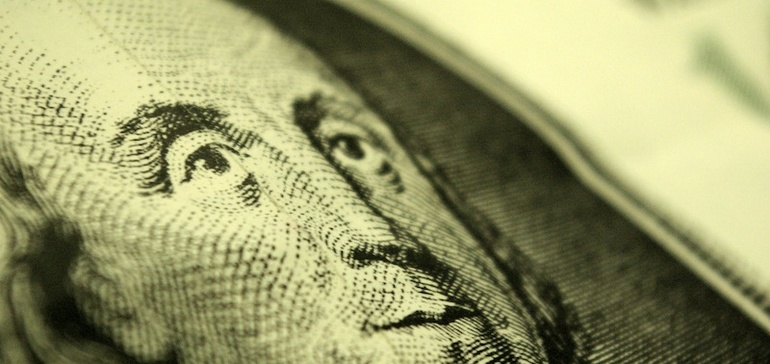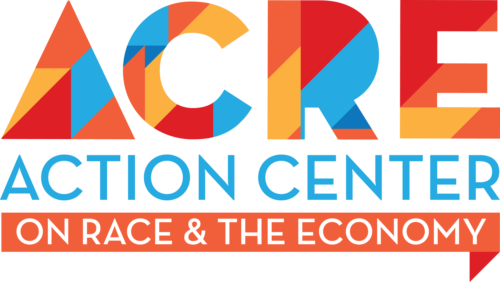It’s convenient to blame Amazon for retailers’ struggles, but the real culprits may be the rising costs and stagnant income dragging down the middle class.

This month marks 10 years of an economic expansion in the U.S. that has been seen mostly on Wall Street, less so on Main Street. It’s either tied for or is the longest recovery ever, depending on which economist you speak to, although it may have reached its limit. Some economists say a recession is swiftly approaching, if not already here.
That’s hardly good news for retailers, considering how many have had to shutter stores, work to address new shopping preferences and, in some cases, declare bankruptcy. If howls of a “retail apocalypse” in recent years were overly dramatic, so is the notion of a major retail miracle. Competitive pressures and financial instability will continue to cull the weak, Moody’s warned last month. Retailers have already shuttered more stores this year than last, the costs of e-commerce are hitting profits, looming tariffs are threatening sales, and Amazon keeps finding new ways to speed fulfillment while escaping many traditional retail challenges.
Some retailers are doing better than others. Luxury brands and discount chains are holding on to their traffic and sales, for the most part. Those whose traditional customers are in the middle, however, are finding it difficult to sell at full price, move their discretionary or premium goods, and grow their base. And while the rise of e-commerce is often blamed for store closures and bankruptcies, that’s not the whole story.
“Store closings are the canary in the coal mine. They are tell-tales of fundamental economic shifts in the country,” Brian Kelly, president of consultancy Brian Brands, told Retail Dive in an email, noting that the American middle class emerged from an era when labor unions fought for higher wages, better working conditions and a 40-hour week, and retailers like independent and department stores catered to those shoppers.
“We are going through this shift again, except this time, the middle is going away,” he said. “There is death in the middle, not because of a lack of meaningful differentiation but rather a lack of meaningful market size. It’s stunning to me that NO ONE is really discussing that retail failure is consumer failure. What’s up with Calvin [Klein] or Ralph [Lauren] or department stores or specialty retail? All of the travails are rooted in this bifurcation of consumer earnings, aka the demise of the middle class.”
The demise of the middle class
The slide started some four decades ago and little has been done about it.
From 1970 to 2012, the U.S. went from having just over half of households with incomes within 50% of the median to 42.2% in 2012, the year of economist Alan Krueger’s speech on his notion of “the Great Gatsby curve“— his finding of “persistence in the advantages and disadvantages of income” that are passed from generation to generation.
Since then, little has changed, except that it now usually takes two incomes to reach those thresholds.Between 2007 and 2017 in the U.S., income growth for those with mean annual household earnings of more than $100,000 rose a staggering 1,305% more than those with less than $50,000, according to a May report from Deloitte.
“The kind of generational improvements in living standards that were long the hallmark of the American middle class have steadily diminished,” Federal Reserve Board Chairman Jerome Powell told an audience at the 2019 Federal Reserve System Community Development Research Conference in May. “In the 1950s, better than 80 percent of children born in middle-class households grew up to out-earn their parents, but more recently only around half do.”
Meanwhile, nondiscretionary expenses are rising for everyone. “The bottom 40 percent of earners had less discretionary income in 2017 than they did 10 years ago, and the next 40 percent saw only a minor increase,” the Deloitte report said. “Only 20 percent of consumers were meaningfully better off in 2017 than they were in 2007, with precious little income left to spend on discretionary retail.”
While retailers may worry about Amazon and other e-commerce players stealing share, there are other, more fundamental forces to blame for their dwindling traffic, customer fickleness and frequent markdowns: Rising healthcare costs and student debt are siphoning money from consumer pockets.
In its recent report on the “Economic Well-Being of U.S. Households in 2018,” the Federal Reserve noted that, if faced with an unexpected expense of $400, 27% of adults would borrow or sell something to pay for it and 12% would not be able to cover it. A fifth of U.S. adults had “major, unexpected medical bills to pay” while a quarter actually “skipped necessary medical care in 2018 because they were unable to afford the cost.”
As retailers tailor their marketing to younger consumers, they should realize that many of those shoppers are being squeezed financially. For those paying off student loans, the typical monthly tab ranges between $200 and $299, according to the Federal Reserve. That’s kept younger shoppers keen on discounts and helped undermine retail niches like wedding apparel.
In fact, younger consumers may not be so different from their forebears, according to Deloitte, which stipulated in its report that, “a growing share of the millennial’s wallet is going toward health care expenses, housing costs, and education, highlighting not so much a change in the consumer, but rather a change in the economic pressures that the young consumer is under.”
It’s getting tougher to break into the middle class as well. Barriers faced by people of color and lower-income consumers keep them out of the middle class, and out of the retail stores that might want to serve them, according to economist Saqib Bhatti, co-executive director of the Action Center on Race and the Economy (ACRE).
Pile on state and local tax and fee increases, plus cuts in government services and support, “and you have the perfect storm,” says retail analyst Nick Egelanian, president of retail development consultants Siteworks. “I don’t see any sign of this trend abating, and what is most stunning is that this has all been happening at a time when we have effective full employment,” he told Retail Dive in an email. “Imagine what will happen when we have a real recession. Many working class Americans will be hurting even more acutely than today and many will go without basic needs.”
The retail factor
Retailers are inextricably tied to the problem of the vanishing middle class.
As consumers try to save money, the hunt for lower prices has fed big-box stores but decimated independent ones, according to Allen Adamson, co-founder of brand consulting firm Metaforce and marketing professor at New York University Stern School of Business. The difficulty of running a small store is closing off a path for immigrants and others, who once regularly opened shops on city corners and thrived sufficiently to send their children to college and pay their workers a living wage.
“Lots of employment for the middle class has traditionally come from retailing, especially small- and medium-sized stores,” he told Retail Dive in an interview. “The big-box stores and luxury stores are doing okay, but as you go down any Main Street — in any sized town across the country, including New York City — all the ‘mom and pop’ retailers are vaporizing before our eyes. But they were more empathic employers because they were part of the community, not trying to squeeze the lowest wage. You were employing your neighbors.”
It’s something of a vicious cycle, as thinner wallets mean fewer consumers can afford the markups sometimes found at bodegas and other smaller stores. “With fewer and fewer Americans able to grow — or even maintain — wealth, more and more are turning to lower cost retail providers,” Egelanian said. “The fastest growing retail category in America is dollar stores.”
Many retailers themselves add to the problem by paying workers below living wages, usually without benefits. Treating labor costs as a line item that must shrink is worst at companies, often leveraged by private equity, that treat their operations as financial instruments, rather than enterprises with merchandise to sell, according to ACRE’s Bhatti. “In the case of Sears or Toys R Us, their investors didn’t see sales as the most profitable way forward,” he said in an interview. “Instead of making money in improving the company, they’re making their money off financial shenanigans.”
A possible solution
The answer may lie at least in part with retailers, and their recent push to upgrade the customer experience. That could resemble the old-school department stores of years ago, when they, as Adamson says, “provided a really good stable career option for people who were willing to work hard.” And the industry is big enough that adequate compensation could help bolster the ranks of the middle class, Bhatti notes.
“From what we’re seeing in some of our work, there’s light at the end of the tunnel,” Adamson said. “The retailers that survive this are those that create experiences and make shopping more than having a product and getting it to you. It takes higher paying jobs and more skilled workers to create an experience, to truly know your customer. That will be found at specialty stores now rather than department stores, but it’s a similar expertise and focus. If you’re average at everything, you’re invisible today.”
Retailers can’t narrow the gap on their own, however. That would take fundamental changes to fiscal policy, healthcare and education reform.
“The theory of ‘trickle down’ benefit never came true, and as the country has continued to double down on the strategy — the result has been soaring deficits and a disproportionate effect on working class, and even middle-upper class, Americans,” Egelanian said, noting that wealth concentration since 1980 coincides with decades of tax cuts for the wealthiest. “Somewhere in the range of 60-70% of Americans are unable to handle an unexpected $1,000 bill, and health care costs are the single biggest cause of debt collection, house foreclosures and personal bankruptcies. On the subject of middle class spending and the wealth gap, I am increasingly seeing that it is having a profound effect on retail.”
